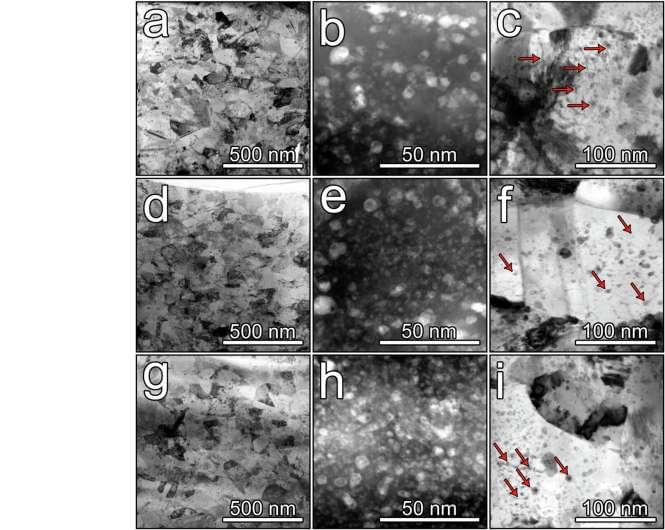An amyloid protein targeted by Alzheimer’s disease therapies seems to be involved in normal mental decline.



Researchers across 14 medical centers in China, including Peking University People’s Hospital, have found that an investigational drug, berberine ursodeoxycholate (HTD1801), significantly lowered blood sugar levels and improved metabolic and liver health in patients with type 2 diabetes (T2D). The findings and an invited commentary, both published in JAMA Network Open, suggest that HTD1801 could serve as a new oral treatment option for T2D and its related complications.


In this work, I present a coherent and comprehensive argument for the nature of consciousness as the inherent ground of phenomena backed by experimental evidence confirming the predictions make by this hypothesis.
This argument makes its point by establishing an equivalence between all observers, generating a set of observational and mathematical predictions which were then tested and confirmed.
Furthermore, when the core tenet of the argument is accepted, it provides clear, testable explanations for most of the curently unresolved questions regarding consciousness, intelligence, and the nature of observed phenomena.

An arms race is unfolding in our cells: Transposons, also known as jumping genes or mobile genetic elements as they can replicate and reinsert themselves in the genome, threaten the cell’s genome integrity by triggering DNA rearrangements and causing mutations. Host cells, in turn, protect their genome using intricate defense mechanisms that stop transposons from jumping.
Now, for the first time, a retrotransposon has been caught in action inside a cell: Refining cryo-Electron Tomography (cryo-ET) techniques, scientists imaged the retrotransposon copia in the egg chambers of the fruitfly Drosophila melanogaster at sub-nanometer resolution. The paper is published in the journal Cell.
Among the international team of scientists achieving this detailed visualization are three scientists with Vienna BioCenter ties: Sven Klumpe, currently in the laboratory of Jürgen Plitzko at the Max Planck Institute of Biochemistry in Martinsried, will join IMBA and IMP to build a group as a Joint Fellow; Julius Brennecke, a Senior Group Leader at IMBA, the Institute of Molecular Biotechnology of the Austrian Academy of Sciences; and Kirsten Senti, staff scientist in the Brennecke group. Also involved in this collaboration is the group of Martin Beck at the Max Planck Institute of Biophysics in Frankfurt.

Researchers have developed a reactor that pulls carbon dioxide directly from the air and converts it into sustainable fuel, using sunlight as the power source.
The researchers, from the University of Cambridge, say their solar-powered reactor could be used to make fuel to power cars and planes, or the many chemical and pharmaceutical products we rely on. It could also be used to generate fuel in remote or off-grid locations.
Unlike most carbon capture technologies, the reactor developed by the Cambridge researchers does not require fossil-fuel-based power, or the transport and storage of carbon dioxide, but instead converts atmospheric CO2 into something useful using sunlight. The results are reported in the journal Nature Energy.

In today’s AI news, CoreWeave has acquired AI developer platform Weights & Biases. According to The Information, CoreWeave spent $1.7 Billion on the transaction. Weights & Biases was valued at $1.25 Billion in 2023. The acquisition extends CoreWeave’s purpose-built cloud platform by enabling an end-to-end experience for customers, enhancing functionality for the world’s leading AI labs and enterprises to build, tune and deploy AI applications.
S Turing Award — often called the Nobel Prize of computer science — is going to Andrew Barto and Richard Sutton, the pioneers of a key approach that underlies much of today Then, a team of researchers at Zoom has developed a breakthrough technique that could dramatically reduce the cost and computational resources needed for AI systems to tackle complex reasoning problems, Chain of draft (CoD), enables large language models (LLMs) to solve problems with minimal words — using as little as 7.6% of the text required by current methods while maintaining or even improving accuracy.
And soon, all businesses will be able to use Meta’s AI to power live, 24/7 customer service that can interact with customers on behalf of businesses on Instagram, Facebook, and WhatsApp. Meta announced advancements in business AI—including the customer service AI agent that will make purchases and can respond to voice prompts from a user.
In videos, say goodbye to manual contract processing! IBM’s Brandon Swink explores how Generative AI, ECM, and Orchestration Hubs streamline document management and improve efficiency. Discover how these technologies transform your approach to complex documents.
And, in this episode of Top of Mind, Gartner Distinguished VP Analyst Daryl Plummer explores the emerging world of guardian agents — AI designed to monitor other AI. Learn how guardian agents will become critical for organizations deploying AI agents for quality control, system observation and security from rogue AI behavior.
Then, how far are we from a true one-person unicorn and what does this mean for the future of employment and capital? Panelists Benjamine Liu, Kanjun Qiu, Dan Murphy, Mitchell Green, Sarah Franklin, and Richard Socher discuss this engaging topic during the recent World Economic Forum in Davos.
S Julia Boorstin sitting down Clara Shih, Meta Thats all for today, but AI is moving fast — like, comment, follow, and subscribe for more Neural News!

In today’s AI news, CoreWeave has acquired AI developer platform Weights & Biases. According to The Information, CoreWeave spent $1.7 Billion on the transaction. Weights & Biases was valued at $1.25 Billion in 2023. The acquisition extends CoreWeave’s purpose-built cloud platform by enabling an end-to-end experience for customers, enhancing functionality for the world’s leading AI labs and enterprises to build, tune and deploy AI applications.
S Turing Award — often called the Nobel Prize of computer science — is going to Andrew Barto and Richard Sutton, the pioneers of a key approach that underlies much of today Then, a team of researchers at Zoom has developed a breakthrough technique that could dramatically reduce the cost and computational resources needed for AI systems to tackle complex reasoning problems, Chain of draft (CoD), enables large language models (LLMs) to solve problems with minimal words — using as little as 7.6% of the text required by current methods while maintaining or even improving accuracy.
And soon, all businesses will be able to use Meta’s AI to power live, 24/7 customer service that can interact with customers on behalf of businesses on Instagram, Facebook, and WhatsApp. Meta announced advancements in business AI—including the customer service AI agent that will make purchases and can respond to voice prompts from a user.
In videos, say goodbye to manual contract processing! IBM’s Brandon Swink explores how Generative AI, ECM, and Orchestration Hubs streamline document management and improve efficiency. Discover how these technologies transform your approach to complex documents.
And, in this episode of Top of Mind, Gartner Distinguished VP Analyst Daryl Plummer explores the emerging world of guardian agents — AI designed to monitor other AI. Learn how guardian agents will become critical for organizations deploying AI agents for quality control, system observation and security from rogue AI behavior.
Then, how far are we from a true one-person unicorn and what does this mean for the future of employment and capital? Panelists Benjamine Liu, Kanjun Qiu, Dan Murphy, Mitchell Green, Sarah Franklin, and Richard Socher discuss this engaging topic during the recent World Economic Forum in Davos.
S Julia Boorstin sitting down Clara Shih, Meta Thats all for today, but AI is moving fast — like, comment, follow, and subscribe for more Neural News!.7 Billion” | >

Joscha Bach is a German cognitive scientist, AI researcher, and philosopher known for his work on cognitive architectures, artificial intelligence, mental representation, emotion, social modeling, multi-agent systems, and the philosophy of mind.
Links of interest:
• http://bach.ai/
• https://twitter.com/Plinz.
Steve and Joscha discuss:
00:00 Introduction.
01:26 Growing up in the forest in East Germany.
06:23 Academia: early neural net pioneers, CS and Philosophy.
10:17 The fall of the Berlin Wall.
14:57 Commodore 64 and early programming experiences.
15:29 AGI timeline and predictions.
19:35 Scaling hypothesis, beyond Transformers, universality of information structures and world models.
25:29 Consciousness.
41:11 The ethics of brain interventions, zombies, and the Turing test.
43:43 LLMs and simulated phenomenology.
46:34 The future of consciousness research.
48:44 Cultural perspectives on suffering.
52:19 AGI and humanity’s future.
58:18 Simulation hypothesis.
01:03:33 Liquid AI: Innovations and goals.
01:16:02 Philosophy of Identity: the Transporter Problem, Is there anything beyond memory records?
Music used with permission from Blade Runner Blues Livestream improvisation by State Azure.
Main episode with Michael Levin (June 2024): https://youtu.be/c8iFtaltX-s?list=PLZ7ikzmc6zlN6E8KrxcYCWQIHg2tfkqvR
Become a YouTube Member Here:
https://www.youtube.com/channel/UCdWIQh9DGG6uhJk8eyIFl1w/join.
Listen on Spotify: https://open.spotify.com/show/4gL14b92xAErofYQA7bU4e.
Join TOEmail at https://www.curtjaimungal.org.
Support TOE:
- Patreon: https://patreon.com/curtjaimungal (early access to ad-free audio episodes!)
- Crypto: https://tinyurl.com/cryptoTOE
- PayPal: https://tinyurl.com/paypalTOE
- TOE Merch: https://tinyurl.com/TOEmerch.